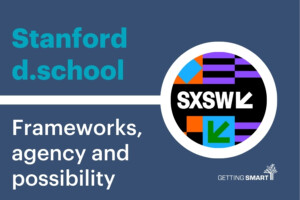Quote of the Day: Moving Away from Institutions

A e-blast from Arc Capital Development caught my attention this morning. It starts with evidence of underinvestment (which is why the learning toolset is a decade behind consumer products):
Over the past decade of venture capital funding, education has been overshadowed by sexier sectors like medical devices, healthcare, and clean energy. VC firms have invested a total of $2.8B in education during the past ten years. To put it into context, in 2011, $4.9B was invested in biotechnology alone. Education also gets disproportionally less investment than its share of the total economy: total GDP over last ten years is 5.5% public spending in education; VC investment in last 10 years is at 3% investment in education.
Despite these numbers and trends, there is good news. Today, education companies are getting far more attention from investors and innovators than ever before. Total VC investment in 2012 was around $600 million (as compared to $150 million in 2002).
So what can we expect in the future? From Arc Capital’s prospective, we are moving away from the model in which learning is organized around stable, usually hierarchical institutions (schools, colleges, universities). Replacing that model is a new, fluid learning system, where learning resources are not scarce but widely available, opportunities for learning are abundant, and learners increasingly have the ability to autonomously dip into and out of continuous learning flows.
The closing comment (emphasis added) about “moving away from…institutions” is a remarkable claim if only true to a degree. Parents will remain interested in the custodial aspect of school for generations. Selective college degrees will continue to carry international reputations for a generation. Beyond that–everything is a jump ball.
Yesterday in Spokane I said that twenty years after “www” became a familiar phrase, we are just beginning to understand the profound implications for how human beings learn–and what it means for institutions of learning.
The Learning Design Opportunity of Our Time is at the intersection of for-me and for-degree learning–interest-based and standards-based learning. Secondary and postsecondary institutions that figure out how to string a sequence of powerful learning experiences, how to leverage just-in-time, and how to award competency-based credentials will remain vibrant. Folks that stick to charging a lot for synchronous courses and credits won’t be around.








0 Comments
Leave a Comment
Your email address will not be published. All fields are required.